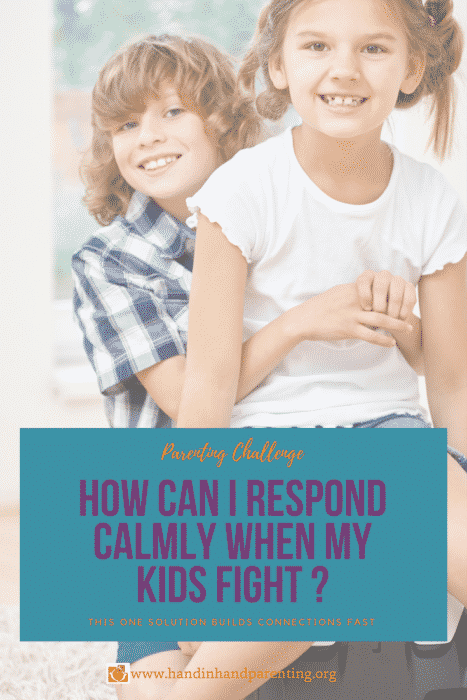![]()
My middle daughter Dody recently got her sister Toty a present. It was really thoughtful of her, but she didn't know that Toty had bought exactly the same notebook in exactly the same color two days earlier.
Toty got really mad.
She thought Dodo hadn’t thought much about her. Then Dodo got mad at Toty because she didn't appreciate her gift.
It was a great big mess.
Sibling Fighting Erupts from Nowhere
 They started yelling and teasing each other until Toty started to cry hard. My feelings at this point were mixed up and confused, and I really wanted to yell at them both just to “Stop!”
They started yelling and teasing each other until Toty started to cry hard. My feelings at this point were mixed up and confused, and I really wanted to yell at them both just to “Stop!”
But I closed my eyes for just a moment, took a deep breath and decided to stay and listen to my daughter’s crying before taking care of my older one.
Crying Can Help a Child Clear Out Their Feelings
Because crying works like a stress-relief mechanism, tears and tantrums are a child’s natural way to shake off accumulated fears, disappointments and small upsets that they collect and that we might not even be aware of. Our limbic system is tuned to sense safety, and when a parent stays close to a child during their upsets it feels to them a good time and space to let go of the stored feelings that have built up. That’s why the crying can seem to escalate, and the upset appears far bigger than what the original incident would trigger. I certainly saw this with Toty.
I kept my eye contact loving and listened empathetically while Toty cried hard. Her crying got louder as I listened until she was screaming and sweating. During the tantrum, she lay on the floor, kicking it and hitting up at me. I gently told her that I'd hold her hands to help her stop hitting me, and then, after a few moments, she suddenly said with great anger, “Dodo doesn't love me, she doesn't want me to have anything! She refused to give me some of her beads so I could make a necklace.”
She kept crying, letting out all of her hurt and pent-up emotion.
I had two feelings at that moment.
 I was comfortable with the fact that she was able to connect to her emotion and could let it out, but I was distressed that she felt that way about her sister. I paid attention to her and told her to tell me more. She kept going around and around the same idea that her sister deprives her from playing with her things. I validated what she was going through, and responded by saying that it really isn’t easy to have those kinds of feelings.
I was comfortable with the fact that she was able to connect to her emotion and could let it out, but I was distressed that she felt that way about her sister. I paid attention to her and told her to tell me more. She kept going around and around the same idea that her sister deprives her from playing with her things. I validated what she was going through, and responded by saying that it really isn’t easy to have those kinds of feelings.
At least, I thought, I now understood that I should help them work on their relationship later.
A Resolution Comes Fast After The Tears Fall
After a couple of minutes, she completely stopped crying, looked at me and said, “Do you know who I played with yesterday at school?” She happily started telling me about her friends and we moved on.
Soon after that, I went to see how Dodo was doing. She told me that she didn't expect the big reaction from Toty and that her intention had been to make her happy. How Toty reacted had disappointed her, she said. I listened carefully and showed her that I totally agreed. She told me that she felt relieved after that and they both got on and interacted with each other normally with no hard feelings.
Hand in Hand Parenting calls this way of active, empathetic listening, Staylistening, and I never stop being amazed by its magic when I practice it with my daughters. The beauty of Staylistening is that it gives the child space so that all feelings can pour out with the presence of a loving and caring listener.
The benefit for me too, as the listener, although it can be hard at times to hear, is knowing much more what bothers my daughters, and how I might go on to guide them or help.
Read Play Works Better Than Punishment When It Comes to Sibling Fighting
Discover ways to help your siblings get along in Taming Sibling Rivalry.
